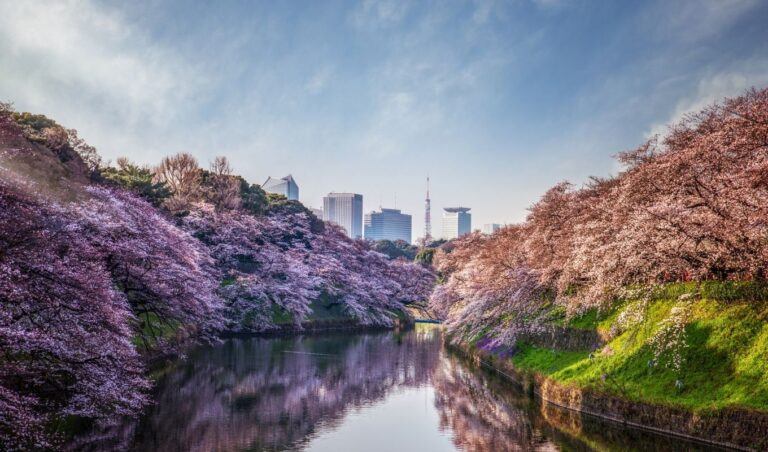Tokyo hotels often raise their rates during festivals and peak times and might be fully booked, so try to make your booking well in advance. Before and after major holidays, the weekends are also likely to be crowded on trains and airports.
On the other hand, staying in the city can be a pleasure since many Tokyo people leave the city and it becomes less crowded. Japanese New Year – December 27 to January 4, plus weekends before and after. Note that some museums and restaurants close for several days during Japanese Christmas. “Golden Week” – Japanese vacation season (April 29th to May 5th). During this week, there are three national holidays.
Many Japanese take the entire Golden Week off from work to celebrate these events. Japanese families usually travel during school vacations, which are from the end of March through to the beginning of April and from July 20 to the end of August.
Tokyo tends to be less crowded at these times since many people go back to their hometowns. While booking is not as tight as the above peak travel seasons, I recommend you make reservations in advance.
Tokyo festivals are tied to historical events, Shinto or Buddhism religion, and usually include processions, native costumes, and booths selling food and souvenirs.
January 1st– New Year Festival (Shōgatsu)
This is a very important celebration in Japan. It is primarily an occasion for family reunions, and train and bus travel will be packed from the 30th of December to the 3rd of January. Make sure to book hotels early on these dates.
January 6th– New Year’s Parade of Firemen, Dezome-Shiki
Organized by the Tokyo Fire Department, this is an event held to pray for a safe year. The main attraction is the ladder stunts. Men dressed as firemen of the Edo Period (17th-19th Centuries) perform circus-like acrobatic stunts on top of bamboo ladders.
February 3rd or 4th– Setsubun – “Bean Throwing Festival.”

At leading temples, there is a custom of throwing roasted soybeans while chanting “In with Fortune! Out with Evil” in order to chase away evil and welcome good luck.
According to Japanese tradition, if you eat the same number of beans as your age, you will enjoy a year of good health. And Don’t Forget to eat some hand-rolled sushi (zushi-maki).
March 3rd– Hina-matsuri – Doll Festival.
Dolls in traditional clothes are arranged on shelves and displayed in the living room of every home blessed with young daughters. Hotels may also take notice of the event by displaying dolls in their lobby. Prayers are held for the health and future of the daughters. It is a popular custom for the girl’s grandparents to purchase her first set of “Hina”- dolls, a sophisticated (and expensive) set of shelves with up to 15 dolls with small matching furniture.
End of March and beginning of April– Sakura – Cherry Blossom Season
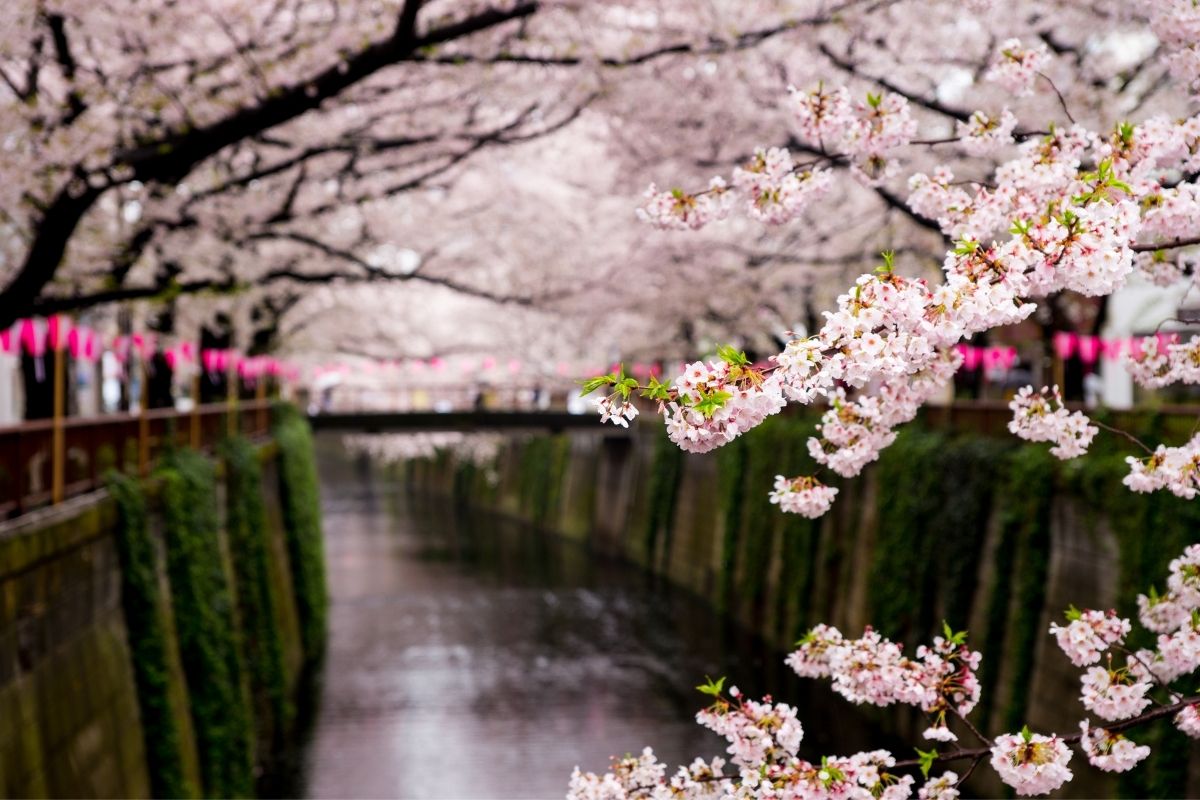
One of the major Japanese festivals. The Sakura celebrations signify the arrival of spring. The start of the cherry blossom season can vary from year to year by as much as two weeks.
The Cherry blossom events also mark the beginning of the new academic year for Japanese schools (the school year starts in April) and the new fiscal year for business. The cherry blossom viewing (Hanami) includes some great traditional activities.
Sakura is an important social event for Japanese people, and it is usually celebrated with friends and family by having a picnic under cherry blossom trees. One of my favorite traditional Japanese food in Sakura is the “Sakura mocha” – a Japanese cake made of rice with sweet red bean paste inside and wrapped with a cherry left.
April 8th– Hana Matsuri (Floral Festival) or Buddha’s Birthday.
The event is celebrated at all Buddhist temples in Tokyo. A small baby image of Buddha is displayed, and sweet tea called Amacha is sprinkled over it as an expression of devotion.
April 29th to May 5th – Golden Week–
During this week, there are three national holidays. Many Japanese take the entire Golden Week off from work. At the time of Golden Week events, the whole of Japan seems to be on the move.
April 29th – Greenery Day
A national holiday. It used to be celebrated as the emperor’s birthday, but since his death, the event has been continued to honor his interest in the flora of his country.
May 3rd– Constitution Memorial Day
A national holiday.
May 5th– Children’s Day.
This event used to be known as Boy’s Festival Day.
Mid-May (The Saturday and Sunday closest to May 15th)– Kanda Matsuri –
held in Kanda Myojin Shrine in Tokyo, this event is considered among the three largest festivals in Tokyo. According to the Western calendar, the main festival is conducted in years ending in odd numbers, and the celebrations held in even-numbered years are much smaller in scale.
The instruction to change the scale of the event in alternate years was determined by the Shogun in the Edo Period because the celebrations then were so extravagant.
The main attraction in odd-numbered years is the parade on the Saturday when 300 people march through central Tokyo districts with portable shrines. Watch out for the Shinto priests mounted on horsebacks producing a spectacular sight.
May – Third Sunday and preceding Friday and Saturday– Asakusa Sanja Matsuri
held at Asakusa Shrine in Tokyo. One of Tokyo’s most famous and largest festivals. Participants carry colorful portable shrines on their shoulders as they parade the streets.
Asakusa is a quarter where you can still find traditional houses and streets. There are also portable shrines carried by women only and by children only. On the Sunday, three especially large-sized portable shrines join the parade. These huge portable shrines depart from Asakusa Shrine early in the morning at 6 o’clock and return around 8 o’clock at night.
June Around 10th-l6th– Sanno Matsuri Festival
Held at Hie-jinja Shrine in Tokyo, this festival consists of a procession of portable shrines through the busy streets of the Akasaka district. A procession of people dressed in ancient costumes parades through the heart of Tokyo, including Tokyo Station, Ginza, and in front of the Diet Building.
The procession includes Mikoshi (portable shrines) adorned with a phoenix on the roof, people carrying drums, and people on horsebacks. You can also see people dressed as the legendary goblin called Tengu, characterized by a red face and a long nose and believed to possess supernatural powers.
The procession departs from Hie-jinja Shrine at 8 o’clock in the morning and does not return to the shrine until early in the evening.
July 7th– Tanabata – Star Festival

According to a legend, the two stars, Vega and Altair, separated lovers, are allowed to meet each other across the Milky Way only once a year, on the evening of July 7th.
At this festival, prayers are also offered so that young girls will improve in calligraphy and handicraft. The custom is to set up leafed bamboo branches in the garden, and people write poems, words or wishes on tanzaku – long strips of colorful paper that they tie on the bamboo leaves.
July 13th-15th– O-Bon (Lantern Festival)
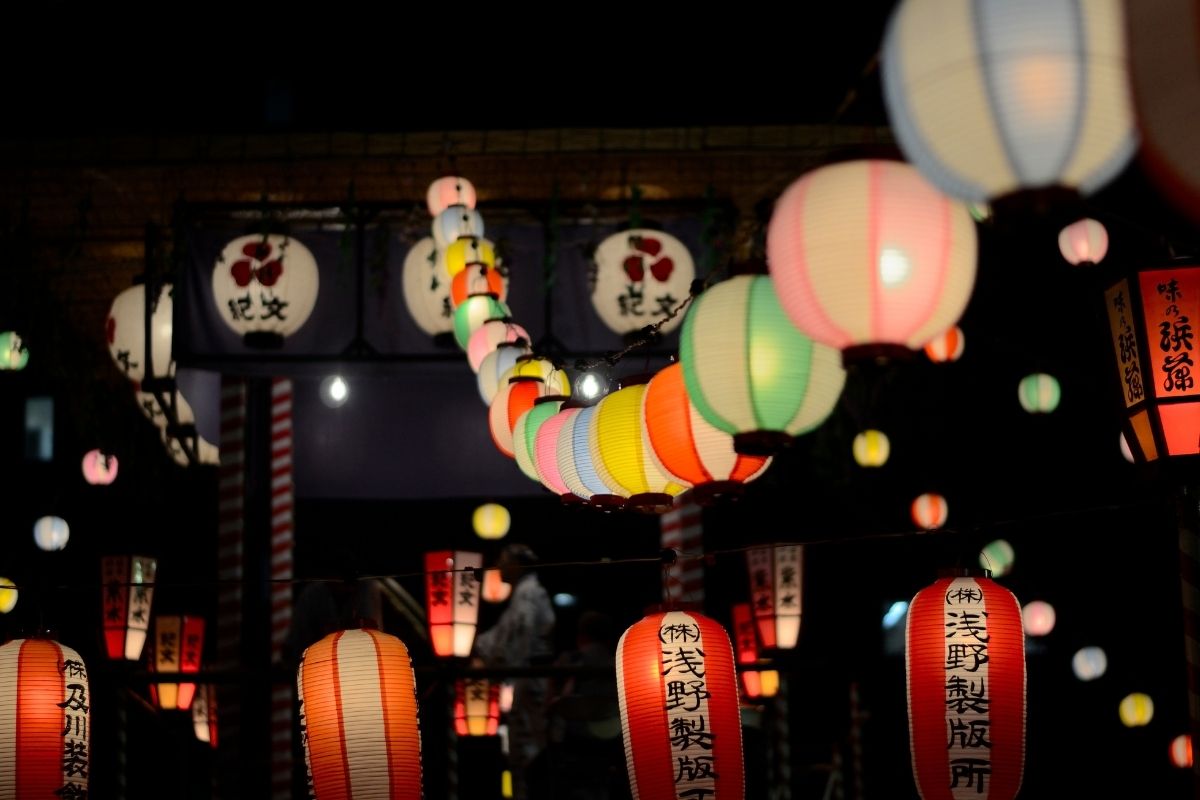
This is a Buddhist ceremony for welcoming back and comforting the souls of our ancestors. The formal name of this event is Ura-Bon. Depending on the region, the Bon celebrations may be held one month later, during August 13th-15th.
Generally, a fire is lit in front of the gate early on the evening of the 13th to receive the souls of the ancestors. At the same time, a Buddhist priest chants prayers in front of the “Shelf of Souls” where offerings of fruit and vegetables are placed. On the evening of the 16th, another fire is lit to see off the souls of the ancestors.
Last Saturday of July– Sumidagawa Hanabi Taikai – Sumida River Fireworks Display
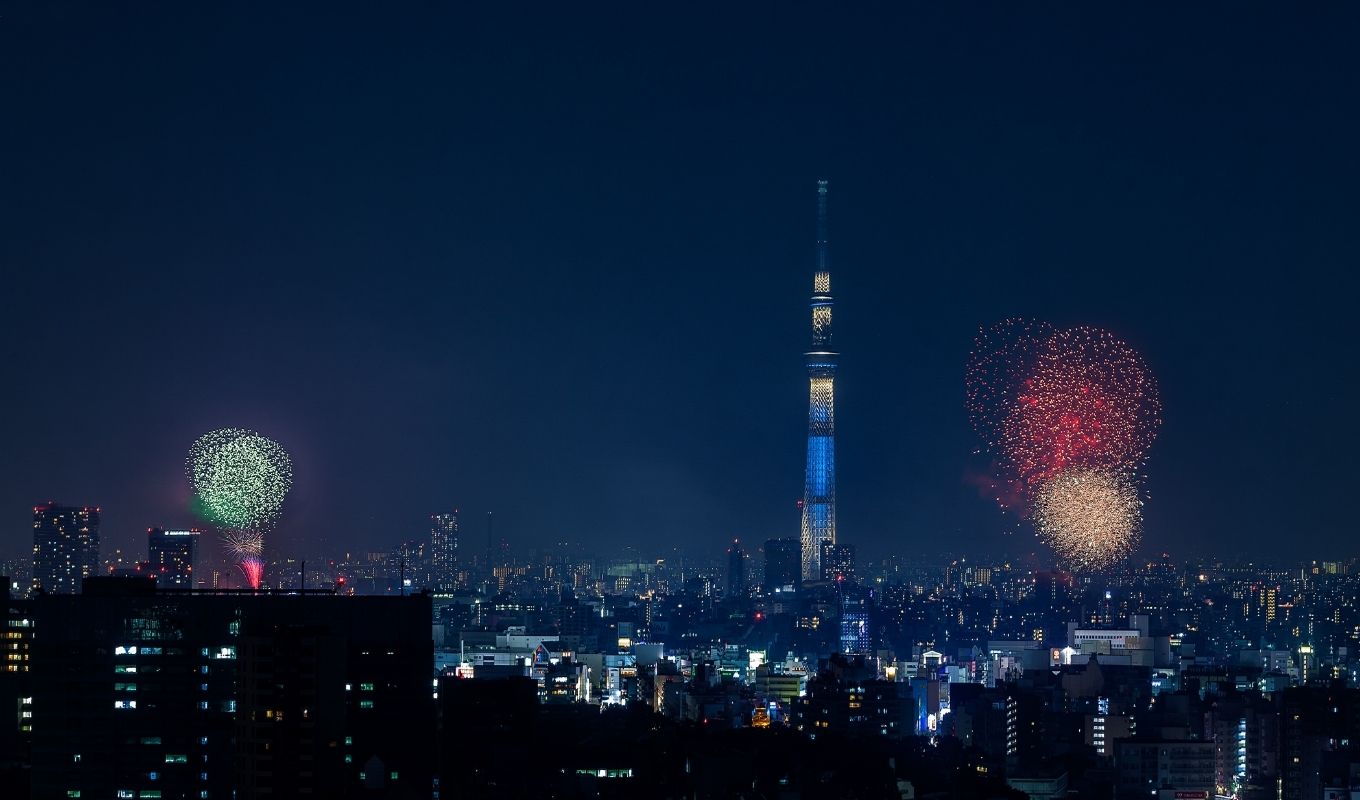
The Sumidagawa Hanabi is one of the major fireworks displays in Tokyo. It’s held in case of light rain but will be postponed if the weather is bad.
The largest display in Tokyo is on the Sumida River, near Asakusa. The evening skies turn into a magnificent scene when an hour-long firework bonanza lights the sky.
Good spots for viewing the fireworks display are along the Sumida River, which flows through the eastern part of Tokyo and ends at Tokyo Bay.
More Info: Sumida River Fireworks Guide: Best Spots To Watch
October 11th – 13th– Oeshiki Festival
The Oeshiki Festival of Hommonji Temple, Tokyo, celebrates the memory of the Buddhist leader, Nichiren (1222-1282). On the evening of the 12th, there is the Mando Kuyo Parade.
A mando is a lighting device fixed on a tall pole and held by the handle, while kuyo means to make offerings to the souls of the dead and to pray for their repose. Three thousand followers form chant the prayer to the unique tune of drums and flutes.
The parade of one hundred mando lanterns decorated with cherry blossoms, from the surroundings of Ikegami Station to Ikegami Honmon Temple, is extremely impressive.
Mid-November– Tori-no-ichi, or Rake Fair
Held at the Otori Shrine. Tori means rooster, one of the twelve animal signs of the Oriental zodiac. Dozens of temporary stalls sell Kumade (bamboo rake), believed to bring good luck, wealth, and fortune. When a rake is sold, it is common practice for the seller and buyer to clap their hands together. Similar fairs are also held in other shrines in Tokyo.
November 15th– Shichi-go-san – the shrine-visiting day for children
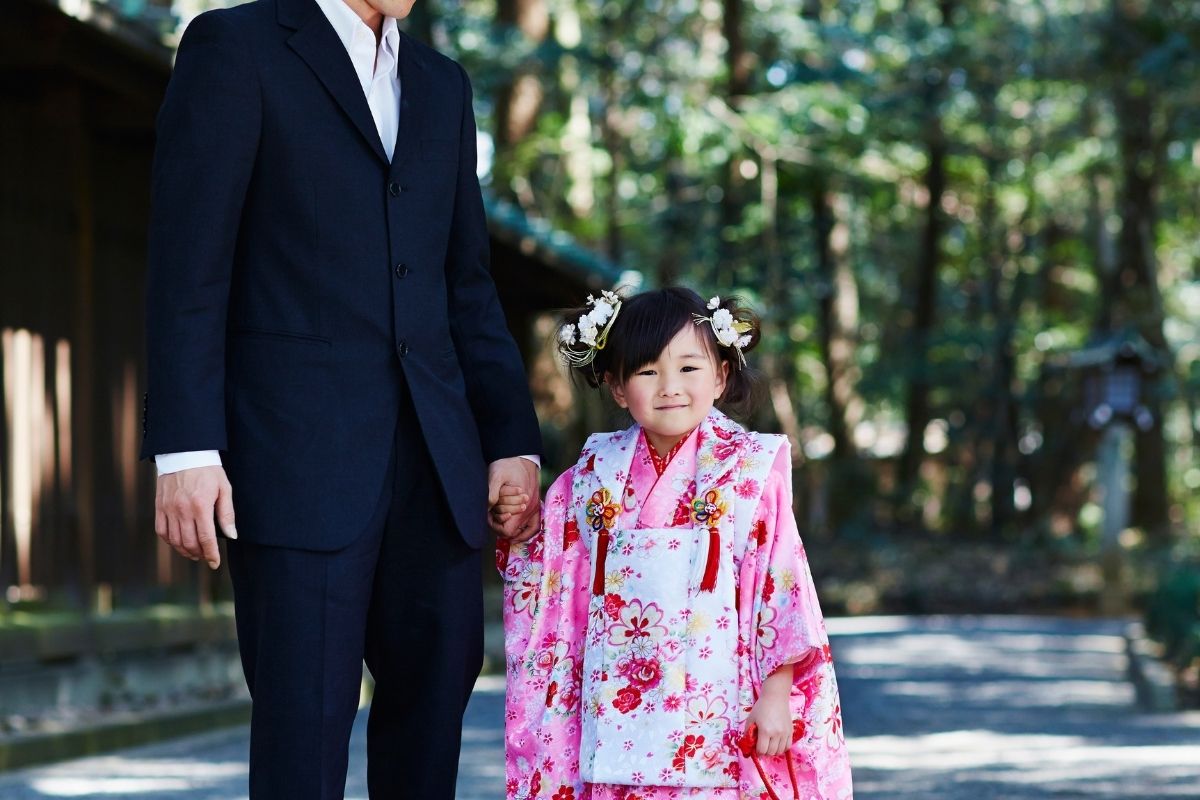
At this time, children aged 3, 5, and 7 go to the shrine with their families to thank the gods for the good health that was given to them.
Celebrations are carried out on November 15th for boys who reach the age of 3 or 5 or girls who turn 3 or 7 years old.
Meiji Shrine in Tokyo is an excellent place to see this festival. The children wear their little Kimonos, but if taking photos, be respectful and always ask permission first.
December 17th-19th– Hagoita-Ichi (Battledore Fair)
The festival takes place at the legendary Senso-ji Temple Asakusa. The Hagoita-Ichi (Battledore Fair) is an annual fair held in the main hall of Senso-ji Temple.
Many open-air stalls sell hagoita (battledores), kites, and other New Year decorations, and many people gather here from all over the country. This is a traditional fair dating back to the Edo Period.





